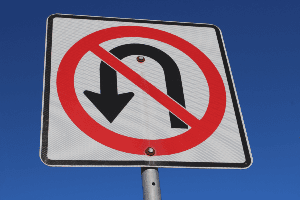BLOG
How is Fault Determined in a U-Turn Accident?
 Making a U-turn is a dangerous maneuver. Drivers should try to avoid them whenever possible. If you do need to make a U-turn, you should use extreme caution. That means only making the turn at a controlled intersection after ensuring the road is clear. If there are other drivers attempting to make a right turn at the intersection, be sure to yield.
Making a U-turn is a dangerous maneuver. Drivers should try to avoid them whenever possible. If you do need to make a U-turn, you should use extreme caution. That means only making the turn at a controlled intersection after ensuring the road is clear. If there are other drivers attempting to make a right turn at the intersection, be sure to yield.
Even if you take all these precautions, an accident may still occur. If it does, you need to recover compensation for your damages. Our New Jersey-area auto collision lawyers are prepared to help. We can discuss your legal options during a free consultation. We also do not charge you any upfront fees if you choose our firm to represent you.
Below, we discuss how liability for a U-turn accident is determined.
WAS THE U-TURN MADE LEGALLY?
U-turns are generally legal in New Jersey. The only time U-turns are illegal is if:
- There is a traffic sign prohibiting U-turns
- A driver cannot see 500 feet in front or behind his or her vehicle
A driver may be liable for a U-turn crash if he or she violates either of these rules.
Liability may not be clear if a driver performs a U-turn while crossing over double yellow lines, though. In some cases, the U-turn may be legal because it does not break any rules. However, if the driver crossed the double yellow lines on a curved road, he or she may be liable. This is because the 500-foot rule would apply in this situation. Curved roads provide poor visibility for oncoming traffic.
Drivers can often make U-turns at a controlled intersection, especially if there is a filter light for left-turning traffic. Drivers who fail to yield the right-of-way while making a U-turn, however, may be held liable if a crash occurs.
WHO HAD THE RIGHT-OF-WAY?
The driver making a U-turn usually does not have the right of way and must yield to:
- Oncoming traffic
- Anyone in the crosswalk
- Vehicles making a right-hand turn
If a driver fails to ensure the way is clear before making a U-turn, he or she could be at fault for the crash.
Accidents involving U-turning and right-turning drivers are common. Often drivers making a U-turn may look for oncoming traffic but fail to look for vehicles making a right turn. This is a situation when the driver may fail to see the right-turning car and crash into it. Because the law specifies that U-turning drivers must yield to those turning right, the U-turning driver would be at fault.
Pedestrians and cyclists in the crosswalk also have the right of way. Drivers must look out for them before attempting a U-turn. If the driver fails to yield, he or she could be liable for the crash. It is important to note that anyone in the crosswalk should only cross when the “walk” sign is on. Otherwise, the pedestrian in the crosswalk may bear partial fault.
DID ANOTHER DRIVER VIOLATE TRAFFIC LAWS?
Although oncoming traffic has the right of way, it is important to note that sometimes U-turn collisions occur because someone in oncoming traffic broke a law. For example, if a driver ran a red light or was speeding.
The driver making the U-turn must do his or her due diligence to avoid a collision. However, a speeding driver who causes a crash while trying to beat the traffic light may bear at least partial fault.
Drivers who blow past a stop sign while someone is attempting to make a U-turn may also be at fault if it leads to a collision.
At some intersections, drivers are prohibited from making a right turn at a red light. If a driver ignores the red light and a U-turning driver crashes into the vehicle, the driver turning right might be liable.
HOW CAN I RECOVER COMPENSATION FOR A U-TURN ACCIDENT?
New Jersey is a no-fault state. This means all drivers must file a claim through their own insurance company to get their medical bills and other damages covered. It does not matter who caused the collision. Your Personal Injury Protection (PIP) should provide some compensation.
However, if the crash was caused by another driver’s negligence, you may be able to seek additional compensation from his or her liability insurance.
There are other factors to keep in mind when filing a first-party claim. For example, your insurance company may require an independent medical exam. Before you go through this process, you should consult one of our licensed attorneys who may be able to help.
CALL US TODAY
If you need help filing a PIP claim or a claim with the liability insurance of an at-fault driver, our attorneys are ready to help.
We offer a free legal consultation to discuss your claim. There are no fees while we work on your case. We also do not get paid until you do.
Call (800) 518-0508 to schedule a free consultation.










